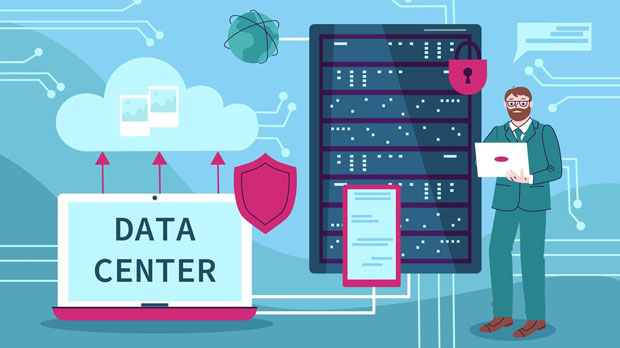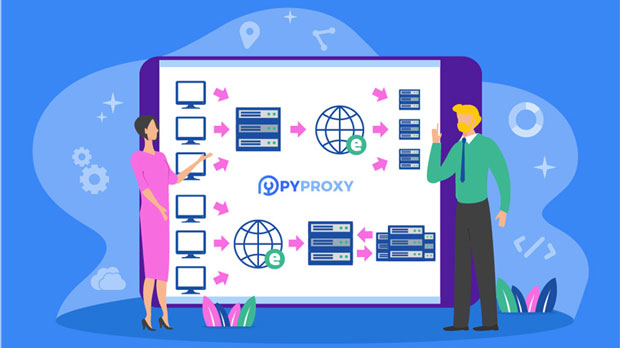When it comes to the effectiveness of free web proxies in bypassing blockades, two names often come up: PYPROXY and Proxyium. Both offer users the ability to surf the web anonymously, but their capabilities in dealing with blocks and restrictions can vary significantly. Understanding how these two compare in terms of performance, reliability, and security is crucial for users who prioritize unrestricted internet access. This article will explore their strengths and weaknesses, providing insights into which service performs better when it comes to overcoming digital barriers, as well as offering practical advice for users seeking to optimize their web access. Understanding the Basics of Free Web ProxiesBefore diving into a detailed comparison of Pyproxy and Proxyium, it’s important to understand the general workings of free web proxies. These services act as intermediaries between the user and the internet, masking the user’s IP address while routing web traffic through their servers. This can help users access restricted content or bypass geographic limitations set by websites, social media platforms, or even entire governments.However, free web proxies often face challenges when it comes to evading sophisticated blocking techniques. Websites and services deploy advanced algorithms designed to detect and block proxy traffic, making the proxy’s ability to bypass restrictions a key factor in determining its usefulness.Pyproxy: Features and PerformancePyproxy has gained recognition as a free web proxy that focuses on providing reliable, fast access to blocked content. Its strengths lie in its simplicity and ease of use, as it offers users a quick and straightforward setup with minimal configuration required. However, the primary factor to consider here is its performance when it comes to bypassing blockades.Pyproxy works by rotating IP addresses and using a large pool of proxy servers to disguise its traffic. This allows users to avoid IP-based blocking, which is one of the most common methods employed by websites to restrict access. Additionally, Pyproxy supports HTTPS traffic, providing an extra layer of security and encryption.Despite these features, Pyproxy’s ability to evade more complex anti-proxy measures, such as deep packet inspection (DPI) or advanced CAPTCHA challenges, is limited. Websites using sophisticated blocking techniques can still identify Pyproxy traffic, leading to potential disruptions in service. Moreover, as a free service, Pyproxy tends to have limited server locations, which can affect its ability to bypass region-based restrictions effectively.Proxyium: Features and PerformanceProxyium is another free web proxy designed to offer an alternative to users seeking to bypass restrictions. While it shares many similarities with Pyproxy, there are a few notable differences in terms of how it handles blockades. Proxyium focuses on offering more robust security features and improved performance compared to some of its competitors.One of the standout features of Proxyium is its ability to handle more advanced anti-blocking techniques. It uses a combination of IP rotation and obfuscation methods to make its traffic appear less like proxy traffic. This can help users bypass more advanced restrictions, such as IP blacklisting and traffic fingerprinting. Additionally, Proxyium often provides access to more server locations than Pyproxy, giving users more options for evading geo-blocked content.Despite these advantages, Proxyium is not without its limitations. While it can bypass many of the most common blocking methods, it can still struggle with highly sophisticated detection systems, such as those implemented by large corporations or government agencies. Furthermore, its free service tier may be subject to throttling or limited bandwidth, which can negatively impact the overall user experience.Comparing the Blocking Bypass CapabilitiesWhen comparing Pyproxy and Proxyium in terms of their ability to bypass digital blockades, it’s clear that both offer decent levels of protection against simple blocking methods. However, Proxyium tends to perform better in situations where more advanced techniques are employed. Its combination of obfuscation and IP rotation makes it a more effective solution for bypassing sophisticated blockades, whereas Pyproxy is better suited for overcoming basic restrictions such as IP blocking.The key advantage of Proxyium lies in its ability to deal with complex challenges like CAPTCHA tests, session tracking, and traffic fingerprinting. Pyproxy, on the other hand, is more likely to be detected by websites that employ these advanced techniques. This difference in performance can be crucial for users who need consistent, uninterrupted access to restricted content.Security ConsiderationsAnother crucial aspect of any proxy service is its security features. Both Pyproxy and Proxyium offer HTTPS support, ensuring that the data transmitted between the user and the proxy server is encrypted. However, the level of encryption and the overall security measures can vary. Pyproxy tends to focus more on providing a simple, user-friendly experience, but it may not offer as many advanced security features as Proxyium. Proxyium, with its more robust anti-blocking mechanisms, also integrates additional layers of security, such as IP and DNS leak protection, to safeguard users from potential data exposure.While both services are relatively secure, users should be aware of the risks associated with free proxies, such as the potential for data logging or exposure to malware. It’s always advisable to conduct further research and consider premium options for users who prioritize the highest levels of security.Performance and Speed: How Do They Stack Up?When it comes to performance and speed, both Pyproxy and Proxyium can vary depending on server load, location, and other factors. Free proxies generally suffer from slower speeds due to limited bandwidth and higher user demand. However, there are notable differences between the two.Pyproxy tends to have slightly faster speeds compared to Proxyium in most regions, primarily due to its simpler setup and fewer security features that could impact speed. On the other hand, Proxyium’s additional security layers and more advanced anti-blocking measures can lead to slight latency or slower speeds in some cases, but the trade-off is often worth it for users seeking a more reliable proxy.Conclusion: Which One Should You Choose?Ultimately, the choice between Pyproxy and Proxyium depends on your specific needs. If you are looking for a straightforward, no-frills proxy that works well for basic content unblocking, Pyproxy might be the better choice for you. It offers simplicity, ease of use, and decent performance for standard web surfing.However, if you need to bypass more sophisticated blockades, such as those involving advanced CAPTCHA challenges, geo-blocking, or IP fingerprinting, Proxyium is the stronger option. It provides enhanced security, better handling of advanced blocking techniques, and a wider range of server locations.For users who value both security and performance in bypassing digital restrictions, Proxyium is likely the better choice. However, Pyproxy still remains a solid option for those who need a quick and easy solution for basic proxy needs.
Sep 01, 2025


































































